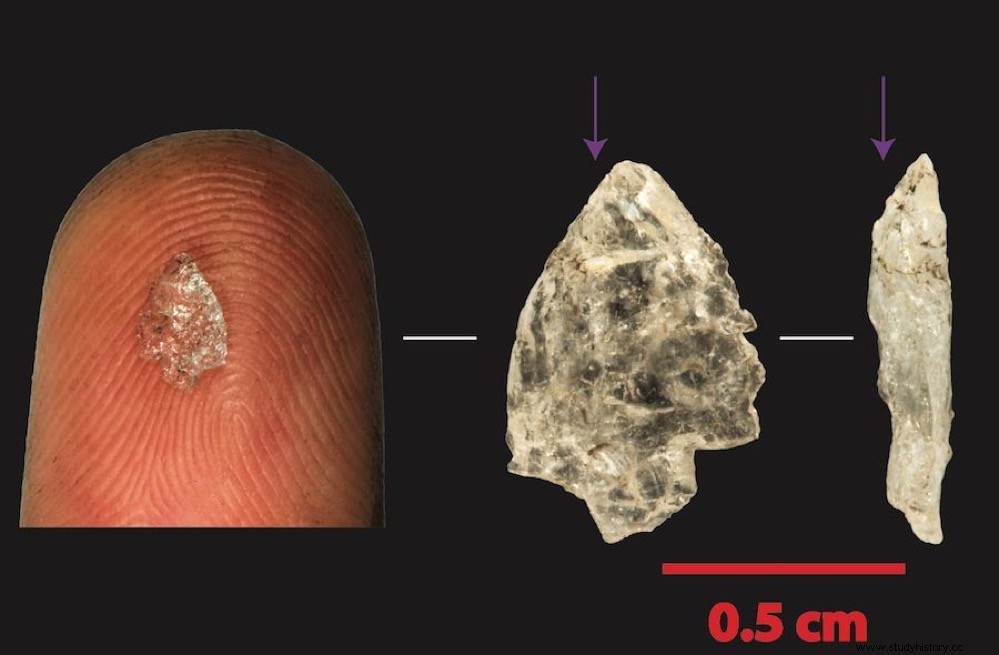Anthropology has long argued that tool making was what set our human ancestors apart from other primates. Now a new study suggests that it wasn't really the creation of tools but their miniaturization that was the key to human evolution.
In an article published in Evolutionary Anthropology Justin Pargeter, an anthropologist at Emory University and lead author of the study, points out that our Stone Age ancestors felt the need to make small tools , a necessity to which humans have been permanently forced.
While other apes used large stone tools, hominids chose to make small tools, allowing them to move easily and transform hostile habitats to suit their needs.

The article pays attention to the small flakes or sheets of stone, less than 3 centimeters long, used for drilling, cutting and scraping, and which appear in the archaeological record on all continents:ubiquitous, easy to make and replace.
Pargeter found among the archaeological remains at the Boomplaas site in South Africa, a small sliver or flake of quartz originally thought to be a remnant from the manufacture of a larger tool. What caught his attention is that it appeared to have been shaped using a method called pressure flaking. .
Upon examination he found that it had a distinctive fracture at the tip, which previous research had shown was associated with hunting damage. The dating of the fragment to about 17,000 years ago places it in the last Ice Age, a time when arrowheads of less than 3 centimeters in diameter are already recorded. But this little quartz is half that size.
In order to take down an animal with it, according to Pargeter, he would need to carry poison at its tip, as well as a high-velocity shooting system, such as a bow and arrow. His hypothesis is that it could have been placed, using a resin of vegetable origin, in a also vegetable rod that would later be inserted in an arrow.
The rod and quartz would be inserted into the animal applying the poison, recovering the arrow, more expensive to manufacture, for reuse. Says Pargeter:Our ancestors were masters of aerodynamics and acted as engineers, rather than what we call "cave people." They built redundancy into their technology systems, allowing them to easily fix their tools and reduce the impact of errors .

The commonly accepted theory is that it is the use of tools that makes us human . According to Pargeter, as we accumulate evidence of tool use by other animals, that seems to change. Some macaques use stones to crack oysters, chimpanzees use them as hammers to crack nuts, and modify sticks for digging and hunting termites. But these tools are great. On the contrary, humans have developed a unique precision system that increases our ability to miniaturize technology .
Also, unlike other primates, who stayed in the habitats of their ancestors, humans were able to disperse thanks to the fact that they could carry the small tools they developed with them. When homo sapiens left Africa he did not carry hand axes, but bows, arrows and small stone tools .
